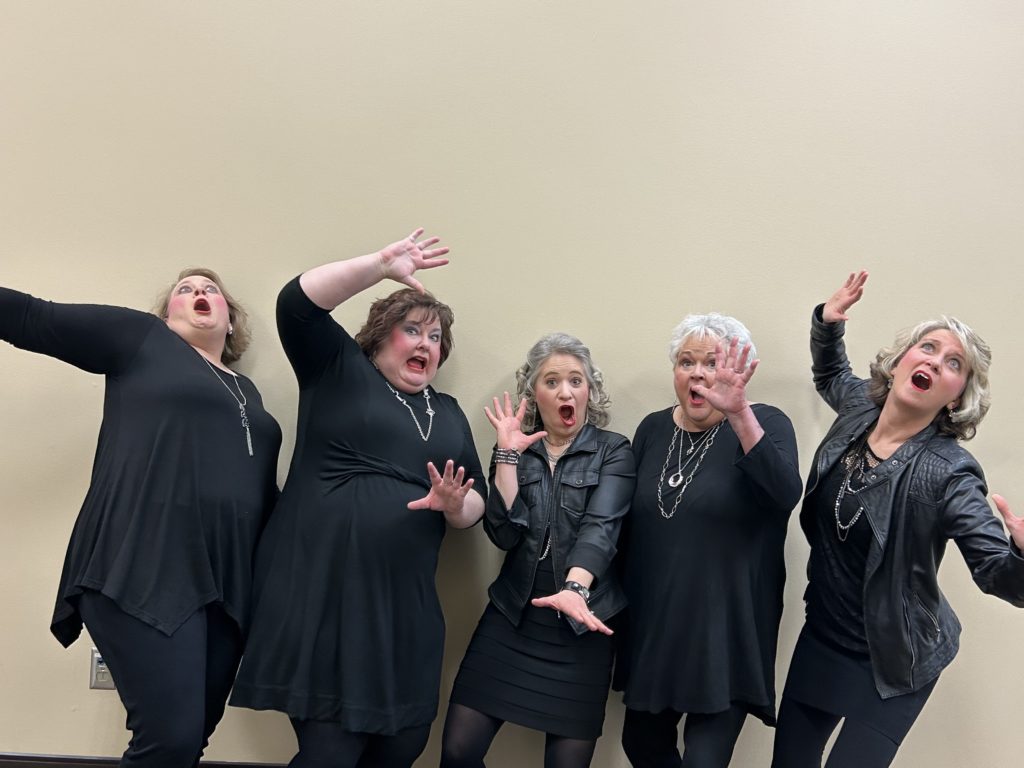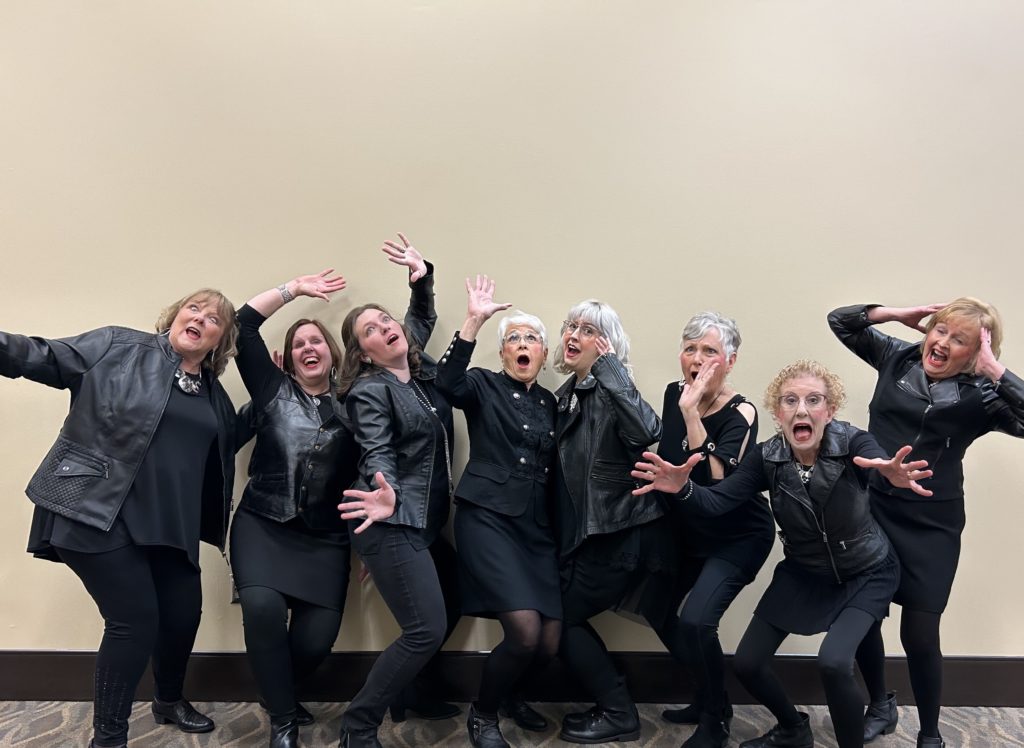what we do
The Voice Parts
*voice part descriptions below provided by Sweet Adelines International




TENOR is a harmony part sung consistently above the lead. The tenor should have a light, sweet, pure tone that will complement but not overpower or overshadow the lead voice. Light lyric sopranos generally make good tenors. The range for tenor is from G above middle C to high F on the top line of the clef. Occasionally you will have notes below the lead. When this happens, your tonal quality will need to change from being light and clear to being more full and round. Flexibility is the key and knowing when you need to change.
LEAD is the melody and must be sung with authority, clarity and consistent quality throughout the lead’s range. The lead sings with limited vibrato to add color and warmth to the sound. With too much use of vibrato, the chord will not “lock” or “ring” or produce the unique, full and “expanded” sound that is characteristic of barbershop harmony. The lead is responsible for conveying the interpretation, emotion and inflections of the song. The range is equivalent to a Soprano II and is from A below middle C, and C above middle C. On the rarer occasions when the melody line is in another part, which may be only for a few notes, the lead will need to be aware to lighten her vocal quality to allow the melody to shine wherever it is being sung. If you are in a quartet, the others will follow your lead. In a chorus, we all follow the director.
BARITONE covers approximately the same range as lead. The voice part is similar to the equivalent of an Alto I except that baritone harmony notes cross the lead notes. Primarily sung below the lead but sometimes sung above, depending on where the melody is situated, baritones must constantly adjust their balance to accommodate their position in the chord. They must have a good ear.
BASS is the lowest note in the barbershop chord. Singers should have a rich, mellow voice and generally sing the root and fifth of each chord. The bass sings a relatively straight, well-produced tone with a minimum of vibrato. The range is comparable to that of a contralto or Alto II in traditional choral music. The range is from E-flat below middle C to G above middle C. Similar to the baritone, this part is written in the bass clef an octave lower than it is actually sung. A bass sings with a heavier tone quality than the others and generally with more volume, to fill out the “cone.” The bass part provides the foundation of each chord.
One Voice Indy is a Sweet Adelines chorus based in Indianapolis, Indiana.
